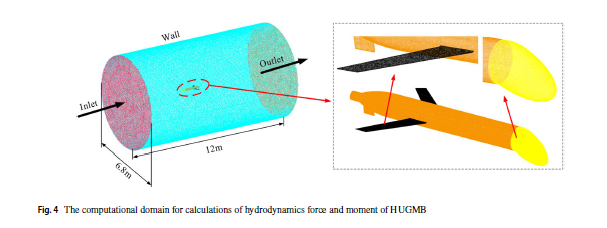Journal of Bionic Engineering (2023) 20:1493–1513 https://doi.org/10.1007/s42235-023-00361-x
Design, Hydrodynamic Analysis, and Testing of a Bio?inspired Movable Bow Mechanism for the Hybrid?driven Underwater Glider
Yanhui Wang1,2 · Yudong Guo1 · Shaoqiong Yang1,2 · Tongshuai Sun1,2 · Xi Wang1 · Huihui Zhou2
Tongshuai Sun stshuai@tju.edu.cn
1 Key Laboratory of Mechanism Theory and Equipment Design of Ministry of Education, Tianjin University, Tianjin 300072, China
2 The Joint Laboratory of Ocean Observing and Detection, Laoshan Laboratory, Qingdao 266237, China
Abstract:Hybrid-driven technology, which can improve the sailing performance of underwater gliders (UGs), has been successfully used in ocean observation. However, a hybrid-driven UG (HUG) with an added tail propeller is still unable to achieve backward and turning motion with a body length radius, and the hydrodynamic pitch moment acting on the HUG that is mainly caused by the fixed-wing makes it difficult to achieve high-precision attitude control during fixed-depth navigation. To solve this problem, a two-degree-of-freedom bioinspired controllable wing mechanism (CWM) is proposed to improve the maneuverability and cruising ability of HUGs. The CWM can realize five motion modes: modifying the dihedral angle or anhedral angle, changing the frontal area of the wing, switching the wing from horizontal to be a vertical rudder, flapping the wing as propulsion, and rotating the wing as a vector propeller. First, the design process of the CWM is provided, and hydrodynamic forces in each motion mode of three CWMs with different trailing edge sweepback angles (TESA) and attitude angles are analyzed through computational fluid dynamics simulation. The relationship between hydrodynamics and the attitude angles or TESA of the CWM is analyzed. Then, experiments are conducted to measure the hydrodynamics of the CWM when it is in a flapping wing mode and rotating the wing as a vector propeller, respectively. The hydrodynamic forces obtained from the simulation are consistent with data measured by a force sensor, proving the credibility of the simulated hydrodynamics. Subsequently, by applying the results of the hydrodynamic force in this study, the flapping trajectory of the wingtip is planned using the cubic spline interpolation method. Furthermore, two underwater demo vehicles with a pair of CWMs are developed, and experiments are conducted in a water tank, further validating and demonstrating the feasibility of the proposed CWM.
Keywords: Underwater glider · Movable bow mechanism · Hydrodynamic simulation · Steering maneuverability

Copyright © 2025 International Society of Bionic Engineering All Rights Reserved
吉ICP备11002416号-1









